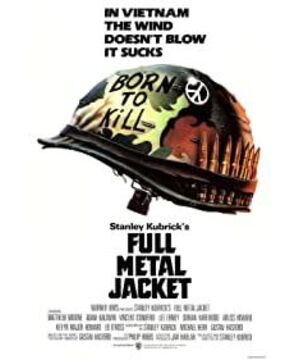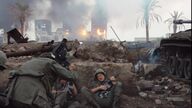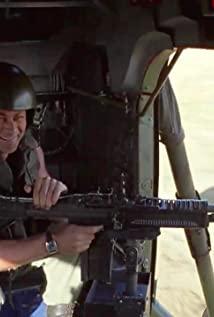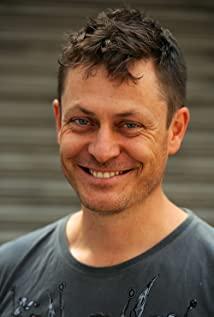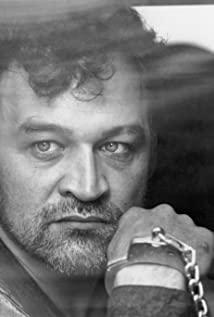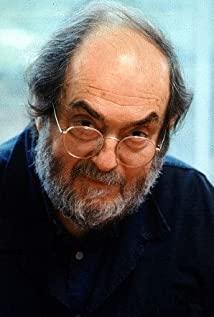The title of the film means a metal shell that wraps the bullet. The narrative of the film adopts a two-stage temporal and spatial sequential structure. The whole film has no shots to express dreams and hallucinations. It is a documentary film.
In the first half of 45 minutes, it is described that 17 recruits were trained at the Marine Corps Recruit Training Camp in Paris Island, South Carolina. Within eight weeks, these recruits had undergone harsh fascist training, falling, climbing, rolling, and beating, and suffered all the hardships, with only one purpose. They were trained to be mindless, dehumanized, and absolutely obedient killing machines. Here, military training is everything. The narrative is single and concise. All narratives that have nothing to do with military training are excluded. The main characters are the instructor Sergeant Hartman, the private "Fool Pyle" and the private "Joker". After eight weeks of brutal training, the recruits were assigned to various combat units. The climax of this passage is at the end. The "fool Pyle" who was trained as a killing machine, the first person killed was the instructor Hartman, and then committed suicide.
In the second half of 71 minutes, the scene of the US Marine Corps fighting in Vietnam is described. There is no transitional passage between the upper and lower parts. The scene suddenly jumps from the suicide of "Fool Pyle" to the scene of street prostitutes soliciting customers in Da Nang, Vietnam. The private "clown" is the object of prostitutes soliciting customers, and is also a clue to connect the upper and lower parts. The plot in the second half revolves around the "Joker" as a military reporter's interview activities. There are scenes of meetings of the editorial office of the "Stars and Stripes"; scenes of Vietnamese civilians being buried alive in a large pit; passages of the US military being attacked during the ceasefire of the Year of the Monkey; scenes of "clowns" flying on a helicopter to the front line and fighting side by side with "cowboys"; There are also scenes of being ambushed, "cowboys" sacrificed, and "clowns" shooting female ambushers. The climax of this period is also at the end. After a fierce ideological struggle, "Joker" defeated animality by human nature, and gave a shot to the injured Vietnamese female ambusher who fell to the ground in pain and struggling so that she could die as soon as possible.
The first half has a bright rhythm and a compact narrative, which is in contrast to the slow rhythm and loose narrative in the lower half. Kubrick claimed more than once that one of his pursuits in film art was to break the traditional narrative structure of film. It should be said that this film has achieved success in breaking the traditional rigorous narrative structure of Hollywood. Of course, the looseness mentioned here does not mean that there is no response. If we say that the orgasm in the upper half represents the bestiality of human beings, then the orgasm in the lower half represents the return of humanity. In this sense, the combination of the two parts perfectly reflects the director's intention: to explain the duality of people through this film.
An excellent film, especially a high-level art film, often captures the audience in the first few shots and leaves a deep impression on the audience. "Full Metal Shell" is no exception.
The Marine Corps Recruit Camp is a school that trains people to be beasts and kill machines. A set of close-up shots at the beginning of the film—17 recruits with different hair styles, each with their heads shaved, each for three seconds, and the camera position is not moving—obviously designed by the director after careful consideration. The director analyzes the essence of recruit training through the appearance of recruits enlisted in the army to shave their hair: the hair is shaved, the personality is shaved, the dignity is shaved, and the human nature is shaved. What is left is the human body. Hartman even ordered the recruits to wear pants to drill indoors. Under his command, he used a gun in one hand and his genitals in the other to move forward, revealing the essence of human distortion in an exaggerated manner.
In a world where there is no name, no gender, no rest, no mind, and of course freedom and sexual desire are not allowed, human nature is replaced by animal nature, and killing becomes the only purpose. A group of scenes of the murder in the toilet vividly foreshadow the various horror scenes that "Fool Pyle"'s partner will face on the battlefield in Vietnam. On the last night of the eight-week training session, "Joker" was on duty and walked into the toilet to check the night, but when "Fool Pyle" was sitting on the toilet and pressing a bullet into his rifle, the two looked at each other. Later the instructor came in and the three main characters met in this particular place.
At this time, the director alternately used a set of panoramic shots, medium shots, medium and close shots, close shots, and close-up shots to explain the positions of the three people, creating a tense atmosphere. Here, Kubrick makes full use of the function of the close-up lens to guide the audience to focus on some important or even key details, allowing the audience to clearly see the changes in Pyle’s facial expressions, especially the window of the soul. , Those eyes dull, full of hatred and murderous eyes. Suddenly, Pyle pointed the gun at the instructor. From his strange gaze, the audience had a foreboding that something terrible was about to happen. Sure enough, he shot and killed the instructor, and then ended his life in a more cruel way.
Close-ups are one of the factors that distinguish film art from theater art. As long as it is used properly, it can greatly enhance the expressiveness of the film. The famous German film theorist Einham said: "The possibility of changing the boundaries of the picture and the shooting distance allows film artists to easily divide any scene without changing the reality." ("Film as Art") He He also said: "(Close-up shots) can emphasize certain parts, thereby guiding the audience to try to figure out the symbolic meaning of these parts. It can make the audience pay special attention to certain important details." (Ibid.) Kubrick has always paid attention in the film industry. It is famous for its details, such as the aforementioned close-up shots of the recruit's haircut and the close-up shots of Pyle's facial expressions that have been used very successfully.
This film is documentary, as mentioned above, but the shape of the toilet is stylized, and the whitewashing of the toilet wall also has a specific meaning. In Kubrick's films, white is often associated with extreme violence, giving the audience a visual impact. In the original script, the location where Pyle shot the instructor was not in the toilet, but in the recruit's dormitory. In order to strengthen the dramatic effect of this scene and make it the climax of the first half of the film, the director moved the shooting location to the toilet and designed this stylized scene that is inconsistent with real life.
The rough language is a major feature of the film, and it also reflects the actual situation of American soldiers in the 1960s. In order to collect typical language materials, Kubrick selected the Vietnam War veteran and former Marine Corps officer Lee Ermi to play the instructor Sergeant Hartman, let him curse as much as he did when he was training recruits. He also asked him to test those who applied to be extras, scold them face to face, observe their reactions, and decide whether to choose. As a result, the director collected up to 240 pages of language material from it, and used the most exciting parts in the movie. These swear words come from life and have been processed. It should be said that they are the condensation of life and the truth of art.
Kubrick said: "Historically, the military has always been composed of young people. On the battlefield in Vietnam, the average age of American soldiers is only 19 years old, lieutenants are in their early 20s, and captains are only 24 to 25 years old. Marine Corps Recruit Training Camp The shock that the eight weeks of barbaric training gave them is no different from the harsh rituals that primitive tribes must go through to reach adulthood."
The Vietnam War is a special war. For the United States, it is a war with no declaration, no direction, no result, and no one knows where the enemy is. This is clearly illustrated in the second half of the film. The trained recruits were sent to the Vietnam battlefield to fight against the haunting guerrillas. There is such a scene: the US army is searching and advancing, a black soldier opens the map but can't find the direction his troops should go. He took out the compass and gave it to the "cowboy." The compass seemed to have lost its function. They still didn't know where to go. The black soldier said, "I think we should change direction." But where is the direction? Where is the enemy? No one knows. The connotation of this scene is profound, and the compass has lost its function, which is very symbolic.
The ambush is the highlight of the second half. The American soldiers were killed one by one, but they couldn't find the enemy. Even tanks, artillery, helicopters, and the most modern weapons were of no avail. This was the Vietnam War. At the end of the film, the "Joker" who was promoted to the sergeant gave a shot to the female ambush who was lying on the ground and struggling, which was the climax of the film. In this scene, the close-up of the face of "Joker" lasted for 1 minute and 40 seconds, and the face was half-bright and half-dark. Through photography, the duality of people was vividly shown, and the theme of the film was pointed out: "Born to kill" ( "Joker" has the words "born to kill" written on its helmet) and "peace-loving" ("Joker" wears a peace badge on its military uniform), but the contradictory opposites are unified in "Joker" .
This Vietnam War film explores the theme of the relationship between "war and man". It explores the complex human nature, human schizophrenia, and human duality a step deeper than other Vietnam War films. It is a controversial and worthy of study. Film.
View more about Full Metal Jacket reviews


